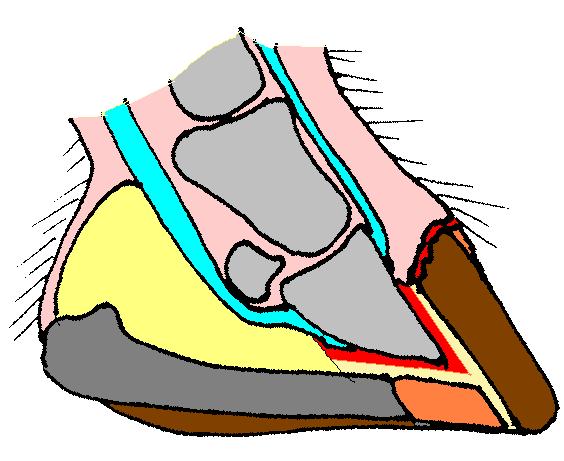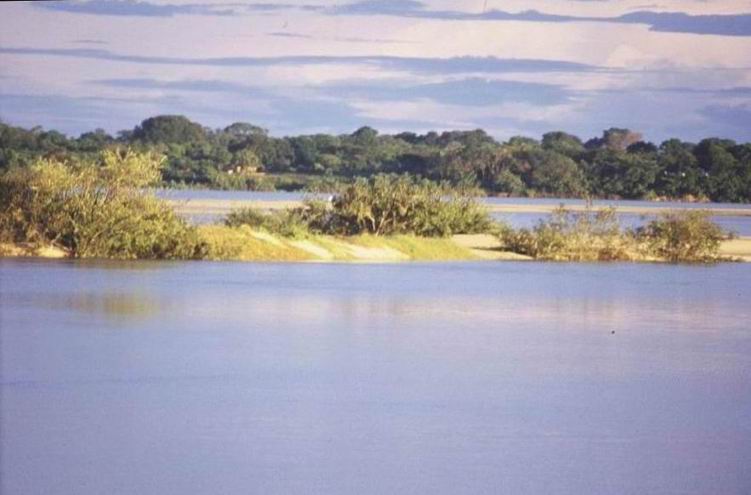|
Marsh Deer
The marsh deer (''Blastocerus dichotomus'') is a species of deer native to South America. It is the largest living species of South American deer. This is the only species in the genus ''Blastocerus''. Distribution It is found in Argentina, Bolivia, Peru, Brazil, Uruguay and Paraguay. Formerly found in much of tropical and subtropical South America, it ranged east of the Andes, south from the Amazon rainforest, west of the Brazilian Atlantic rainforest and north of the Argentinian Pampa. Today it is largely reduced to isolated populations at marsh and lagoon zones in the Paraná, Paraguay, Araguaia and Guapore river basins. Small populations also occur in the southern Amazon, including Peru where protected in Bahuaja-Sonene National Park.Thornback, J., and M. Jenkins. 1982. The IUCN mammal red data book, Part 1: Threatened mammalian taxa of the Americas and the Australian zoogeographic region (excluding Cetacea). IUCN. 516 pp.Cabrera, A. 1961. Catalogo de los mamifero ... [...More Info...] [...Related Items...] OR: [Wikipedia] [Google] [Baidu] |
Antifer
''Antifer'' is an extinct genus of large herbivorous deer belonging to the tribe Odocoileini native to South America during the Pleistocene, becoming extinct around 12,000 years ago. It was one of the largest South American deer genera, with an estimated body mass of up to , comparable to red deer, considerably exceeding the marsh deer, the largest living South American deer species in size. The genus has large antlers that could reach length of over . Taxonomy ''Antifer'' was named by Ameghino (1889) based on Captain Antifer in a Jules Verne novel describing his voyage of discovery in the Southern Hemisphere. It was assigned to Cervidae by Carroll (1988).R. L. Carroll. 1988. Vertebrate Paleontology and Evolution. W.H. Freeman and Company Fossil distribution The fossil remains are confined to southern Brazil, the Sopas Formation of Uruguay, central Chile and Argentina. [...More Info...] [...Related Items...] OR: [Wikipedia] [Google] [Baidu] |
Hoof
The hoof (: hooves) is the tip of a toe of an ungulate mammal, which is covered and strengthened with a thick and horny keratin covering. Artiodactyls are even-toed ungulates, species whose feet have an even number of digits; the ruminants with two digits are the most numerous, e.g. giraffe, deer, bison, cattle, goats, gazelles, pigs, and sheep. The feet of perissodactyl mammals have an odd number of toes, e.g. the horse, the rhinoceros, and the tapir. Although hooves are limb structures primarily found in placental mammals, hadrosaurs such as '' Edmontosaurus'' possessed hoofed forelimbs. The marsupial '' Chaeropus'' also had hooves. Description The hoof surrounds the distal end of the second phalanx, the distal phalanx, and the navicular bone. The hoof consists of the hoof wall, the bars of the hoof, the sole and frog and soft tissue shock absorption structures. The weight of the animal is normally borne by both the sole and the edge of the hoof wall. Hooves perform man ... [...More Info...] [...Related Items...] OR: [Wikipedia] [Google] [Baidu] |
Blacktail Deer
Black-tailed deer or blacktail deer occupy coastal regions of western North America. There are two subspecies, the Columbian black-tailed deer (''Odocoileus hemionus columbianus'') which ranges from the Pacific Northwest of the United States and coastal British Columbia in CanadaB.C. Ministry of Env., Lands & Parks. (Undated) Mule and black-tailed deer in British Columbia. to Santa Barbara County in Southern California, and a second subspecies known as the Sitka deer (''O. h. sitkensis'') which is geographically disjunct occupying from mid-coastal British Columbia up through southeast Alaska, and southcentral Alaska (as far as Kodiak Island).B.C. Ministry of Forests. 1996–1998Coastal Black-Tailed Deer Study linking to five reports.MacDonald, S. and Cook, J. (2007Mammals and Amphibians of Southeast Alaska The black-tailed deer subspecies are about half the size of the mainland mule deer (''Odocoileus hemionus hemionus'') subspecies, the latter ranging further east in the western U ... [...More Info...] [...Related Items...] OR: [Wikipedia] [Google] [Baidu] |
Mule Deer
The mule deer (''Odocoileus hemionus'') is a deer indigenous to western North America; it is named for its ears, which are large like those of the mule. Two subspecies of mule deer are grouped into the black-tailed deer. Unlike the related white-tailed deer (''Odocoileus virginianus''), which is found throughout most of North America east of the Rocky Mountains and in the valleys of the Rocky Mountains from Idaho and Wyoming northward, mule deer are found only on the western Great Plains, in the Rocky Mountains, in the southwest United States, and on the west coast of North America. Mule deer have also been introduced to Argentina and Kauai, Kauai, Hawaii. Taxonomy Mule deer can be divided into two main groups: the mule deer (''sensu stricto'') and the black-tailed deer. The first group includes all subspecies, except ''O. h. columbianus'' and ''Sitka deer, O. h. sitkensis'', which are in the black-tailed deer group. The two main groups have been treated as separate species, but ... [...More Info...] [...Related Items...] OR: [Wikipedia] [Google] [Baidu] |
CITES Appendix I
CITES (shorter acronym for the Convention on International Trade in Endangered Species of Wild Fauna and Flora, also known as the Washington Convention) is a multilateral treaty to protect endangered plants and animals from the threats of international trade. It was drafted as a result of a resolution adopted in 1963 at a meeting of members of the International Union for Conservation of Nature (IUCN). The convention was opened for signature in 1973 and CITES entered into force on 1 July 1975. Its aim is to ensure that international trade (import/export) in specimens of animals and plants included under CITES does not threaten the survival of the species in the wild. This is achieved via a system of permits and certificates. CITES affords varying degrees of protection to more than 40,900 species. , the Secretary-General of CITES is Ivonne Higuero. Background CITES is one of the largest and oldest conservation and sustainable use agreements in existence. There are three working ... [...More Info...] [...Related Items...] OR: [Wikipedia] [Google] [Baidu] |
IUCN
The International Union for Conservation of Nature (IUCN) is an international organization working in the field of nature conservation and sustainable use of natural resources. Founded in 1948, IUCN has become the global authority on the status of the natural world and the measures needed to safeguard it. It is involved in data gathering and Data analysis, analysis, research, field projects, advocacy, and education. IUCN's mission is to "influence, encourage and assist societies throughout the world to conserve nature and to ensure that any use of natural resources is equitable and ecologically sustainable". Over the past decades, IUCN has widened its focus beyond conservation ecology and now incorporates issues related to sustainable development in its projects. IUCN does not itself aim to mobilize the public in support of nature conservation. It tries to influence the actions of governments, business and other stakeholders by providing information and advice and through buildin ... [...More Info...] [...Related Items...] OR: [Wikipedia] [Google] [Baidu] |
Vulnerable Species
A vulnerable species is a species which has been Conservation status, categorized by the International Union for Conservation of Nature as being threatened species, threatened with extinction unless the circumstances that are threatened species, threatening its survival and reproduction improve. Vulnerability is mainly caused by habitat loss or destruction of the species' home. Vulnerable habitat or species are monitored and can become increasingly threatened. Some species listed as "vulnerable" may be common in captivity (animal), captivity, an example being the military macaw. In 2012 there were 5,196 animals and 6,789 plants classified as vulnerable, compared with 2,815 and 3,222, respectively, in 1998. Practices such as cryoconservation of animal genetic resources have been enforced in efforts to conserve vulnerable breeds of livestock specifically. Criteria The International Union for Conservation of Nature uses several criteria to enter species in this category. A taxon ... [...More Info...] [...Related Items...] OR: [Wikipedia] [Google] [Baidu] |
Bahuaja-Sonene National Park
Bahuaja-Sonene National Park () is a protected area located in the regions of Puno and Madre de Dios, in Peru. Geography The park comprises river terraces, hills and mountains, with elevations ranging from 500 to 2450 m. The main rivers in the area are: Heath, Tambopata and Candamo. The park shares borders with Madidi National Park in Bolivia to the east and Tambopata National Reserve to the north. Ecology Flora Plant species found inside the park include: '' Virola sebifera, Cedrela odorata, Spondias mombin, Celtis schippii, Bertholletia excelsa, Ficus insipida, Hevea guianensis, Cedrelinga cateniformis, Iriartea deltoidea, Calycophyllum spruceanum, Guadua weberbaueri, Theobroma cacao, Miconia'' spp.'', Annona ambotay, Swietenia macrophylla, Myroxylon balsamum, Astrocaryum murumuru, Enterolobium cyclocarpum'', ''Mauritia flexuosa'', etc. Fauna Birds found inside the park include: the white-tailed goldenthroat, the Neotropic cormorant, the blue-and-yellow macaw ... [...More Info...] [...Related Items...] OR: [Wikipedia] [Google] [Baidu] |
Guaporé River
Guaporé River (, ) is a river in western Brazil and northeastern Bolivia. It is long; of the river forms the border between Brazil and Bolivia. The Guaporé is part of the Madeira River basin, which eventually empties into the Amazon River. The Guaporé crosses the eastern part of the Beni savanna region. It forms the border of the Guaporé Biological Reserve, and is fed by rivers originating in the reserve, the São Miguel, Branco, São Simão, Massaco and Colorado. About 260 fish species are known from the Guaporé River basin, and about 25 of these are endemic.Hales, J., and P. Petry (2013). Guapore - Itenez'. Freshwater Ecoregions of the World. Retrieved 28 February 2013 While many fish species in the river essentially are Amazonian, the fauna in the Guaporé also has a connection with the Paraguay River (part of the Río de la Plata Basin The Río de la Plata basin (, ), more often called the River Plate basin in scholarly writings, sometimes called the Platine basi ... [...More Info...] [...Related Items...] OR: [Wikipedia] [Google] [Baidu] |
Araguaia River
The Araguaia River ( , Karajá language, Karajá: ♂ ''Berohokỹ'' [beɾohoˈkə̃], ♀ ''Bèrakuhukỹ'' [bɛɾakuhuˈkə̃]) is one of the major rivers of Brazil, and a tributary of the Tocantins River. Geography The Araguaia River comes from Goiás-Mato Grosso south borders. From there it flows northeast to a junction with the Tocantins River, Tocantins near the town of São João. Along its course, the river forms the border between the states of Goiás, Mato Grosso, Tocantins and Pará. Roughly in the middle of its course the Araguaia splits into a fork (with the western stream retaining the name Araguaia and the eastern one being called the Javaés River). These later reunite, forming the Ilha do Bananal, the world's largest river island. The vein of the Javaés forms a broad inland where it pours back into the main Araguaia, a 100,000 hectare expanse of igapós or flooded forest, blackwater river channels, and oxbow lakes called Cantão, protected by the Cantão State Par ... [...More Info...] [...Related Items...] OR: [Wikipedia] [Google] [Baidu] |





